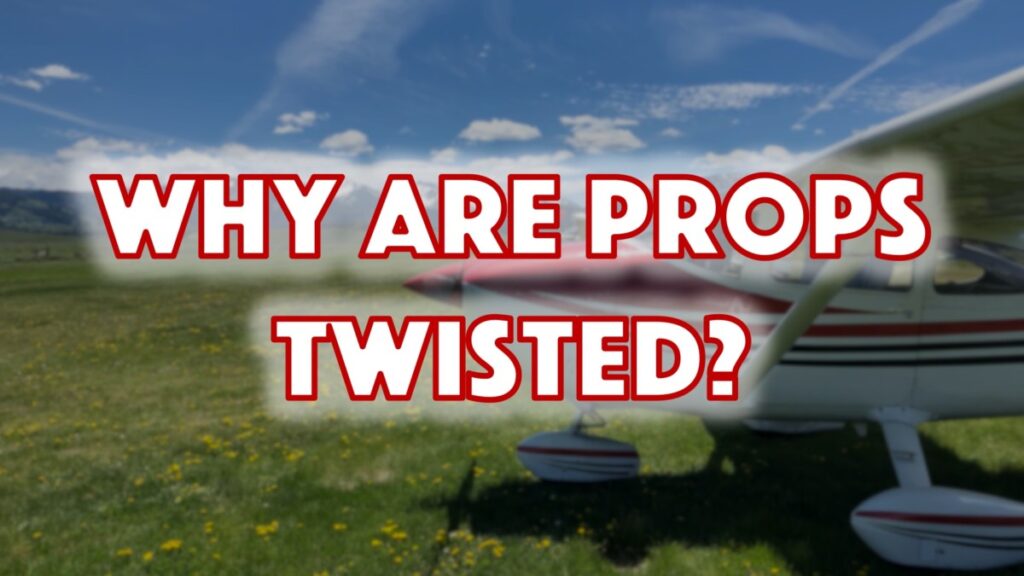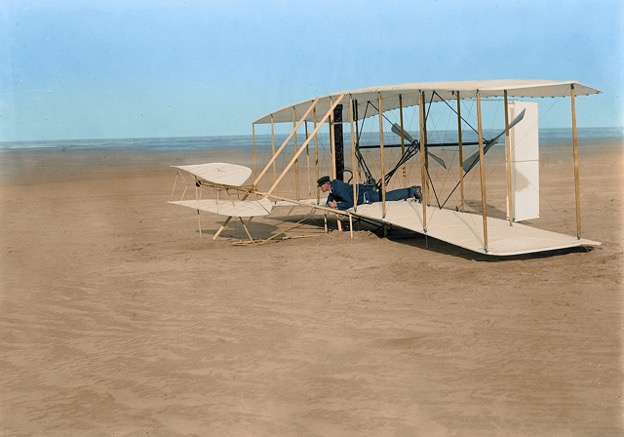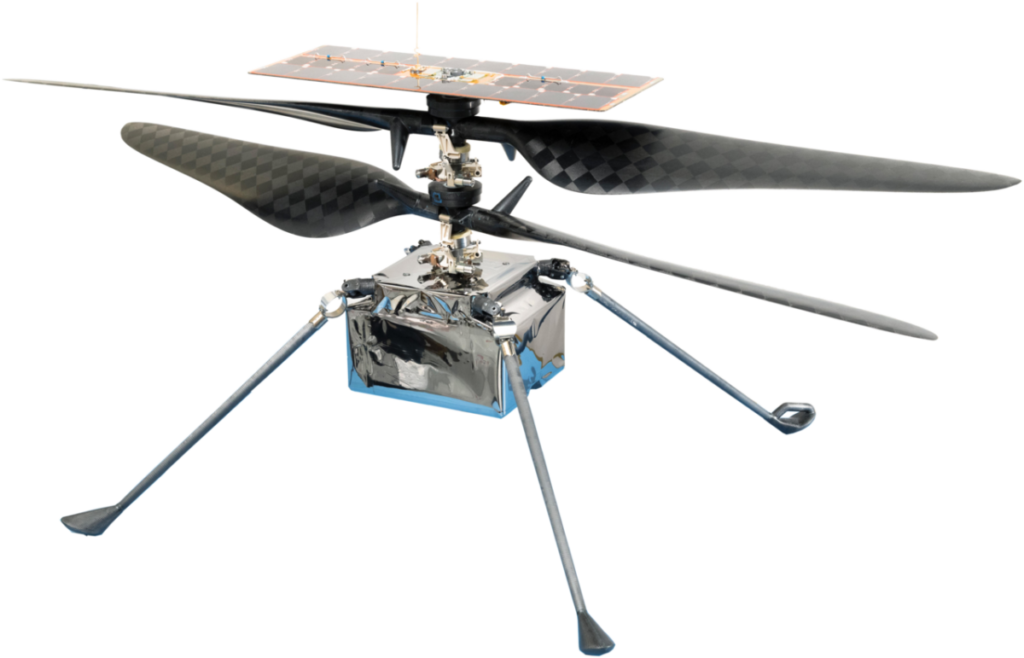
Take a close look along the length of a propeller, from the tip towards the spinner, and you will likely notice that it looks like the propeller twists. This twist along each propeller blade is, of course, very intentional and necessary to extract the most performance out of the propeller.
Why are propeller blades twisted?
Propeller blades are twisted because the blade tips travel faster than the center of the propeller. The twist of the blades compensates for this speed difference so as to produce uniform thrust along the length of the propeller blade.
A propeller’s main job is to convert the torque produced by the engine into a linear force that propels (hence, “propeller”) the aircraft forward.
Thrust is developed because as the propeller moves through the air, it produces a force – just like a wing. The main difference is that while the wing is oriented to produce lift (upwards force) meant to counteract weight (downward force), the propeller is oriented to produce thrust (forward force) to counteract drag (rearward force).
The Propeller is an Airfoil
Thrust is produced by propeller blades because each blade is an airfoil, just like a wing. Stand back for a moment while on the ramp, and you’ll easily see that each blade of a propeller has a shape similar to a wing, along the entire length of the blade from the hub to the tip.

The “bottom” of the blade (toward the cockpit) is relatively flat and the “top” of the blade (facing forward) is rounded just like the more familiar wing-type airfoil.
The leading edge of the propeller is rounded and the trailing edge is a bit more pointed. Again, this is just like what is found in most airfoil designs.
As air moves over and around the blade, explanations provided by Bernoulli and Newton provide insight as to how thrust is created.
Bernoulli taught us that an area of low pressure develops in front of the propeller blade (over the “top” surface). The higher air pressure behind (“under” the blade) wants to fill the low pressure void and “pushes” along the length of the blade, pushing the entire airplane forward.
Newton also explains some of the thrust by pointing out that as the propeller moves vast quantities of air backwards along the longitudinal axis of the aircraft, the “equal and opposite” reaction is the resulting thrust.
The production of lift by an airfoil is a complex topic that is better explained in an aerospace engineering course, but the explanations above are correct enough for our understanding as pilots.
However, a propeller blade is subject to an interesting phenomena that is unique to the rotational movement not present with a traditional wing: the airfoil is not traveling at the same speed along its entire length.
Propeller RPM vs. Blade Tip Speed
The relationship between propeller RPM and the actual speed at which the airfoil moves through the air is a very simple yet dramatic concept that you may not have thought much about.
A typical Cessna 172 propeller has a diameter of 75”. The circumference that the tip of the propellers travels through each rotation is therefore 236”.
When that propeller is spinning at 2,500 RPM, the tip (37.5” from the center of the hub) has to travel almost 20’ in the same amount of time that the inboard part of the propeller (10” from the center of the hub) has to travel 5’.
In other words, on a Cessna 172, at 2,500 RPM, the tip is covering almost 4x the distance that the inboard part of the blade is on each revolution.
This creates a pretty substantial speed difference between the tip and the root. How much of a difference?
Warp Drive Props has a really cool propeller tip speed calculator that can be used to calculate that difference. Check it out!
On a 20 degree Celsius day and at 2,500 RPM, that Cessna 172 propeller blade tip is traveling at a speed of 558 MPH (that’s Mach 0.72 – and you thought everything about a Skyhawk was slow!).
10” out from the hub, at the root of the propeller, the propeller is traveling at only 149 MPH. That’s a 409 MPH difference!
Propeller twist compensates for the speed difference along blades
With that huge difference in speed between the root and the tip of the propeller, it makes sense that if the desire is for the blade to produce lift evenly along the entire length of the propeller, blade twist is needed so that the “wing” traveling at 149 MPH is producing the same lift as one traveling at 558 MPH.
The only way to accomplish that is to set the angle of incidence of the blade so that the angle of attack at 149 MPH is higher than it is at 558 MPH.

This is why, as you look down the length of the propeller blade, you will notice that the root of the blade is angled to take a much larger “bite” of air than the tip is. This allows a more equal distribution of lift allowing the entire length of the propeller blade to be a producer of thrust.
The center part of a propeller blade travels more slowly, with a high angle of incidence. The outer part of a propeller blade travels much more quickly, with a lower angle of incidence. Early airplane designers used trial and error, wind tunnels, and flight testing to achieve this.
Engineers these days make use of advanced computer modeling to design an optimal propeller blade that balances the demands of thrust, efficiency, weight, strength, and cost.
Believe it or not, wings and propeller blades share this design feature. Most airplane wings are designed with some twist, called washout. There is a higher angle of attack at the base of the wing compared to the tip of the wing.
We’ll link a longer article about washout here when it’s completed, but the basic design idea behind washout is to ensure that the tip of the wing is the last part to stall – this is important to guarantee aileron authority near a stall condition.
What about curved (scimitar-shaped) propellers?
Some propeller blades have a slight curve towards the tip, in the shape of a scimitar. There are good reasons for this kind of design that are outside of the scope of this article but are very interesting nonetheless.
Read more in our article about why some propeller blades are twisted.
Have propeller blades always been twisted?
It was actually our very own Wright brothers who first made successful use of a twist along the length of a propeller blade. They had done some wind tunnel testing for their wing design and recognized the importance and relationship between angle of attack and the production of lift.
The 1903 Wright Flyer was the first successful airplane design. It made use of two spruce propellers with a diameter of an impressive 8 feet each.

In this article, the authors point out (using some very sophisticated formulas) that the 1903 propeller used by the Wright brothers achieved about 82% efficiency in producing thrust and that their propellers match, almost exactly, modern day propeller design across the outer 2/3rds of the propeller length.
They point out that modern high performance propellers are around 90% efficient while a typical Cessna 172 propeller is around 74% efficient at cruise speed.

Further Reading: Propeller Topics
Here at Airplane Academy, we love propellers and have written extensively about them. Here are some of our favorite articles about propellers.



